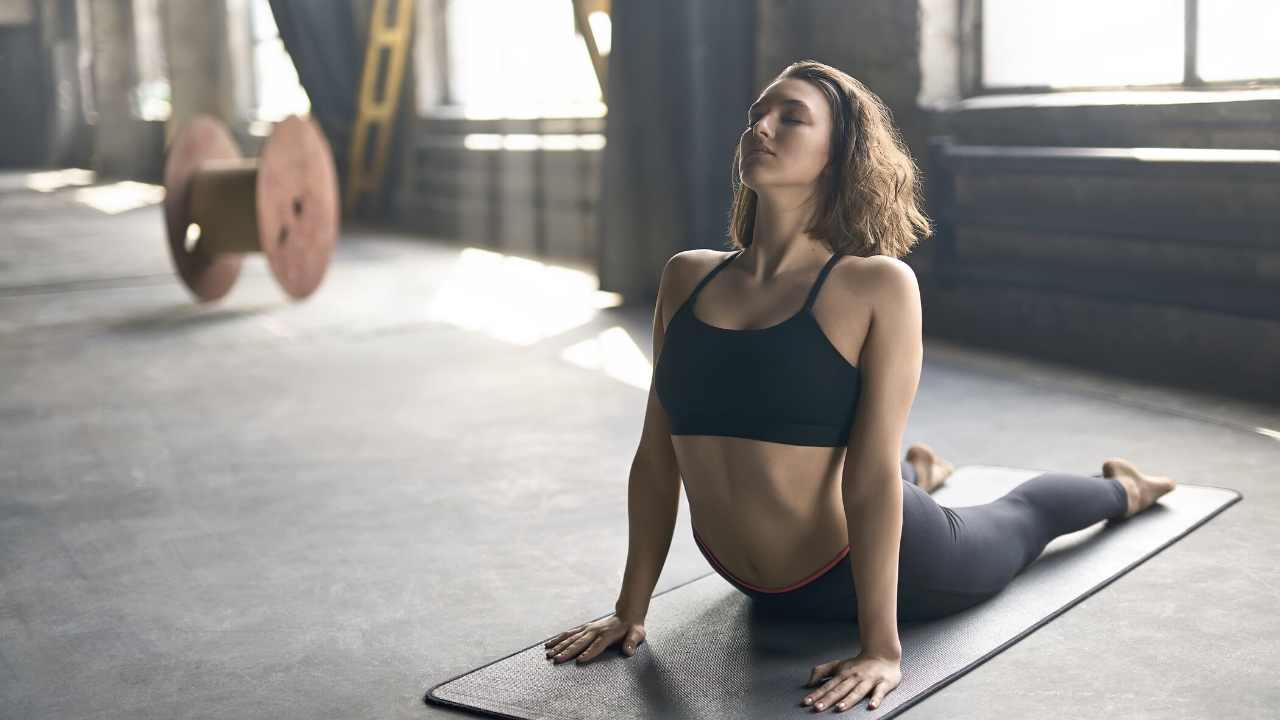
There are many reasons you might not be getting enough sleep. Hormonal changes, stress, emotional problems, or even your diet could all contribute to you not getting the sleep you need. Yoga for insomnia is an effective alternative sleep aid formulated by a specialist in the ancient yogic techniques. Yoga for insomnia focuses on correct breathing and simple poses. This book will help you find an exercise program specifically designed for insomnia.
Stress
If you're experiencing trouble sleeping, you may have considered a practice like yoga for insomnia and stress. While yoga exercises can be extremely relaxing, they don't replace professional medical treatment. You should consult a doctor when you have difficulty sleeping or experience stress that prevents from sleeping. Yoga may not be right for everyone. Before you start, talk to a doctor. Here are some tips to help you get a good nights sleep.
Hormonal changes
The effects of yoga and sleep have been a topic of interest for researchers for years. However, only a few studies have investigated the effects of yoga upon hormone levels. The researchers looked for a global effect of at least two. The results showed that yoga had no significant impact on sleep efficiency or overall quality. However, the research offers new insight into how yoga affects hormones. To assess the effectiveness, the study used Cohen’s categories.

Emotional problems
Sleeplessness can affect anyone, be it nervousness about a job interview, the cries of a newborn, or the stress of parenthood. All parents have to put in a lot of work, but it is especially difficult for new parents. Yoga can help alleviate the effects of these emotional disturbances and improve sleep quality. Here are some benefits of yoga as a treatment for insomnia.
Diet
Insomnia, a common illness that affects millions of people, can be common. It can last from a few days up to weeks, and it can affect as many as 54% of Americans. Ten to fifteen% of these people are suffering from chronic insomnia. Unfortunately, many people resort to sleeping pills to relieve their insomnia. In fact, the number of prescriptions has increased by 60% since 2000. To find an effective sleep aid, you need to know what is causing your insomnia and how to remedy it.
Exercise
For those suffering from insomnia, aerobic exercise may be a good idea. It has been shown that exercise can increase blood oxygen and promote sleep. You should exercise for 20 minutes at least four to five days a week. This involves vigorous use of leg muscles, which produces a fatigue that acts as a tranquilizer. Aerobic exercise is most effective for insomniacs as it can be done in the afternoon or evening. Aerobic exercises can also raise body temperature which helps to reduce sleep-related insomnia.
Rehabilitative positions
Yoga poses can help insomniacs fall asleep. These yoga poses are perfect for getting to sleep before bed. The result is a more peaceful night and better sleep. Malloy recommends five restorative postures for yoga that you do before going to sleep. Each position should be done for six cycles. You can also try a chest-to-thigh pose. This pose helps you to bring your attention inward, releasing any stress or fatigue. Continue to do this for six more times.

Inversions
Inversions can be a good option for yoga. There is less chance of you falling asleep. Inversions are easy to do and can help you get up. Because it's not as difficult as a handstand, legs up the wall are a great choice. It helps release stress and allows your whole body to rest. And for even more benefit, you can try forearm balance.
FAQ
What happens if yoga is done every day?
It makes you feel calm, relaxed, and centered. It improves posture, balance, and flexibility.
You become more aware of your body and how it feels when you move. This awareness helps you to be more mindful and aware of your own body.
Yoga improves concentration.
Your mind becomes more sharp and clear. It calms your nervous systems. It reduces stress levels. It can also give you a sense peace and well-being.
What has research shown about yoga for wellbeing?
Yoga has been found to improve mental well-being, reduce stress levels, and promote overall wellbeing. It can help you lose weight, improve your body mass index (BMI), and keep you healthy.
Yoga can help lower blood pressure, improve cardiovascular function and boost immunity.
These are just a couple of benefits of yoga.
This list could go on forever!
I already do some type of exercise. Can yoga still be beneficial to me?
Yes! Yes! Yoga can improve your training results, even if you're not very active. Combine yoga with other fitness activities such as running or cycling, or lifting weights to get better results.
Yoga helps you to focus on your breathing, which will help you burn calories quicker.
You can also improve your endurance. So, whether you're a beginner or an advanced yogi, you can enjoy the benefits of yoga.
What are the best kinds of yoga mats to use?
There are several types of yoga mats available. Choose one based on its size, price, and durability.
A good quality mat will be thick enough to protect your floor surface from scratches but thin enough to move quickly.
A cheap mat may not provide adequate support.
As a beginner, can I practice yoga every day?
Yoga is an excellent way to strengthen and stretch your body. It is also a great way to relax and release stress. Yoga doesn't require you to be an expert. For beginners, yoga should be practiced for 20 minutes at least three times per week.
This is enough time for you to get started. Gradually increase the time spent practicing.
Statistics
- According to the Agency for Healthcare Research and Quality, falls are incredibly common among older adults in nursing facilities. Even the simplest ones can increase the risk of death (24). (healthline.com)
- The American Psychological Association recently shared that 84% of American adults feel the impact of prolonged stress (5). (healthline.com)
- About one in seven U.S. adults practiced yoga in the past 12 months, according to a 2017 national survey. (nccih.nih.gov)
- Lock in 25% off your Founding Member rate. (corepoweryoga.com)
- According to calorie estimates calculated at Harvard Medical School, the average 125-pound person burns about 120 calories in a half hour of hatha yoga, and a 185-pound person burns about 178 calories in that half hour. (everydayhealth.com)
External Links
How To
Can I do yoga during pregnancy?
Being pregnant can impact your ability to perform certain poses safely. Before beginning a new exercise routine, it is advisable to consult your doctor.
However, there are many poses you can still do during pregnancy. Here are some tips:
-
It is not a good idea to lift heavier than shoulder-level weights for pregnant women. Instead, use lightweight resistance bands or dumbbells.
-
Avoid deep twists. They could cause pressure to your stomach.
-
Try to avoid backbends until you give birth. This can place excessive strain on the lower back.
-
To deliver your baby safely, you should not be seated cross-legged or lying on your stomach.
-
Your doctor will have to approve you before you attempt inverted poses, such as handstands and headstands.
-
Do not exceed 30 minutes of practice per day.
Once you're ready to continue practicing yoga, you can do it throughout your pregnancy. Your doctor will let you know when you are ready for yoga.